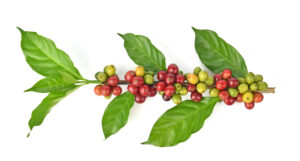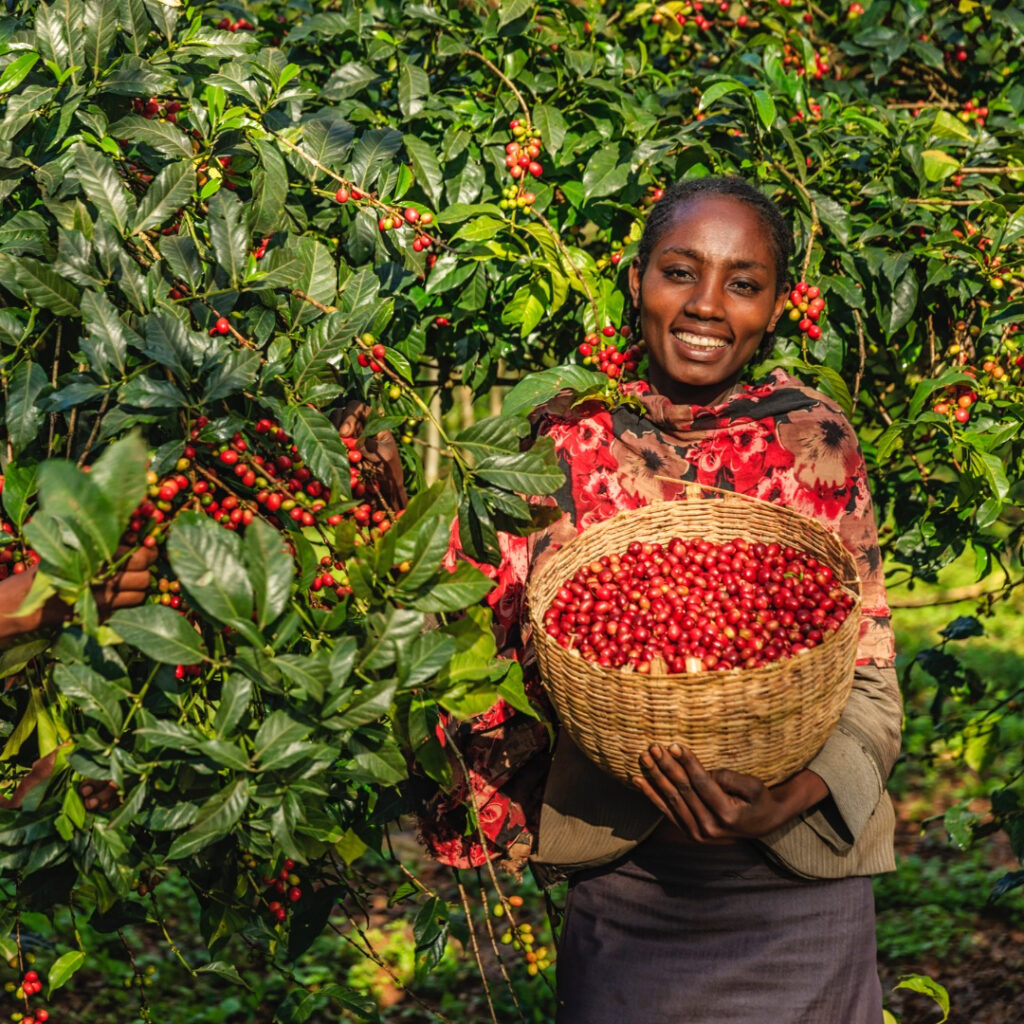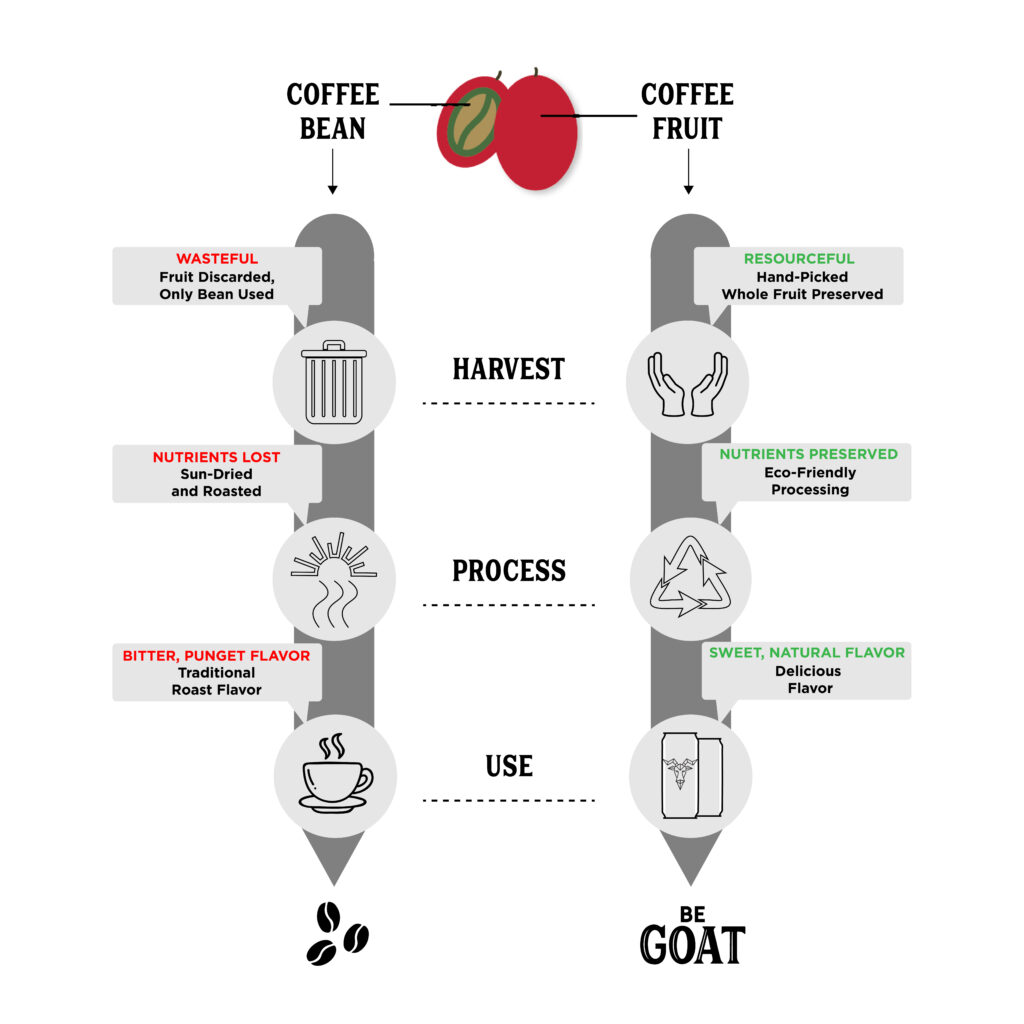The coffee bean and roasting process are most understood by several cultures around the world. What tends to be underappreciated is the coffee cherry extraction process and what happens to the coffee cherry once the coffee bean is removed. Some might not even fully understand that a coffee cherry grows around a coffee bean. Ps. The brewed version of a coffee cherry, also known as cascara, is one of BeGOAT’s key ingredients! It’s delicious, refreshing, and light in flavor. Here is everything you need to know and more about a coffee cherry, or coffee fruit.
Is coffee a fruit or a cherry?
Coffee is technically considered a fruit, more specifically a cherry. Coffee beans are the seeds found inside the fruit, commonly called a coffee cherry. The coffee cherry itself is a small round fruit that turns from green to red or purple when ripe. The coffee beans are extracted from the cherry, processed, and then roasted to produce the familiar coffee beverage that we consume. So, while we often associate coffee with roasted beans, it originates from the fruit or cherry of the coffee plant.

Are coffee beans cherry seeds?
Yes! The coffee beans are technically the seeds found inside the coffee cherry. The coffee cherry is a fruit that grows on the coffee plant. Inside the cherry there are typically two coffee beans, although occasionally there may only be one. These beans are the seeds of the coffee fruit. After processing and roasting, the coffee beans are ground and brewed to make the coffee beverage we all enjoy. So in essence, the coffee beans can be considered the seeds of the coffee cherry.
Where do coffee cherries grow?
Coffee cherries primarily grow in regions that have suitable climates and conditions for coffee cultivation. The coffee plant is grown in various countries located within the “coffee belt” or “green belt”. This belt spans the equatorial regions such as Brazil, Colombia, Coast Rica, Indonesia, and Nicaragua. Each region’s specific climate, altitude, soil conditions, and coffee-growing practices contribute to the unique characteristics and flavors of the coffee cherries grown in those areas.

What color are ripe coffee cherries?
Ripe coffee cherries are typically red, deep red, or purple in color. As coffee cherries mature, they undergo a color change from green to yellow, and finally to that red or purple color. The exact color can vary depending on the coffee variety and growing conditions, but red is the most common color associated with a ripe cherry. Coffee farmers will carefully monitor the color of the cherries to determine the optimal time for harvesting.
What happens to the flesh of a coffee cherry?
During the coffee processing stage, the flesh or pulp of the coffee cherry is typically removed, leaving behind the coffee beans. The process of separating the pulp from the beans is known as coffee cherry processing or coffee cherry de-pulping. The extracted bean then undergoes further processing steps, such as fermentation, washing, and drying before they are ready for roasting and brewing. The coffee fruit is typically discarded or reused as fertilizer that goes back into the coffee farm. It is still uncommon to find the coffee fruit repurposed into beverages or food products.
Can coffee fruit be brewed?
Absolutely, the coffee fruit or coffee cherry can be brewed to make a beverage known as cascara. Cascara is made by steeping the dried skins and pulp of the coffee cherry in hot water, similar to how tea is brewed. The word cascara means husk or skin in Spanish, referring to the outer layer of the coffee cherry. Cascara can be enjoyed hot or cold and is sometimes used as an ingredient in various coffee-based drinks, energy drinks, or cocktails. It is important to note that cascara is distinct from traditional coffee brewed from roasted coffee beans. The coffee beans themselves are typically roasted and ground to produce the familiar coffee beverage, while cascara involves brewing the dried fruit pulp and skins of the coffee cherry.
What does the fruit of the coffee plant taste like?
The taste of coffee fruit can vary based on the specific variety, ripeness, and processing method. It may have a combination of sweet, tart, and floral notes which create a unique and enjoyable taste experience.

Say hello to BeGOAT. One of the few companies to utilize the coffee cherry to brew a healthy, sustainable, and refreshing clean energy beverage. Featuring 200 mg of caffeine, 25 calories, 5 g of organic cane sugar, non-GMO, gluten-free, and 7 net carbs, in addition to all-natural plant-based ingredients.
BeGOAT has thoroughly concocted 7 incredibly delicious flavors, so there is an option for all. No need to look any further when you are on the hunt for your next boost of antioxidants, immunity reinforcement, or low-calorie midday pick-me-up.
- Cascara Berry
- Grapefruit Tangerine
- Hibiscus Lime
- Strawberry Lemon Ginger
- Watermelon Dragonfruit
- Jackfruit Coconut Mango
- Lemonade Mint
BeGOAT Cascara+ is better for the people and better for the planet.
Follow BeGOAT on social media to get all the latest, greatest updates and news. Don’t forget to swing by your local market for a sustainable and refreshing BeGOAT Cascara+ energy drink. You can conveniently shop online if you can’t find your desired flavor in the neighborhood market.



